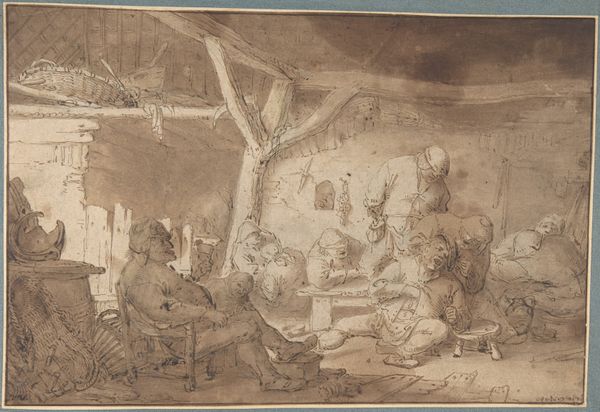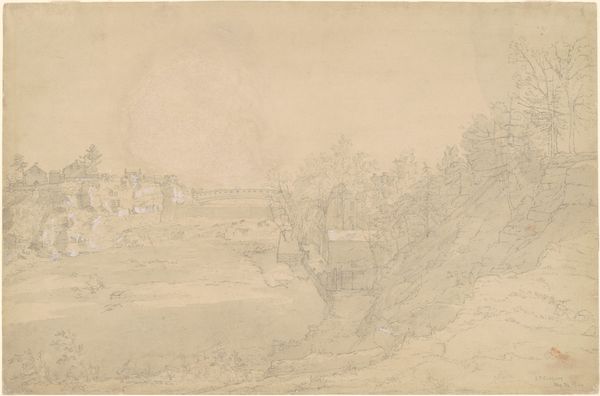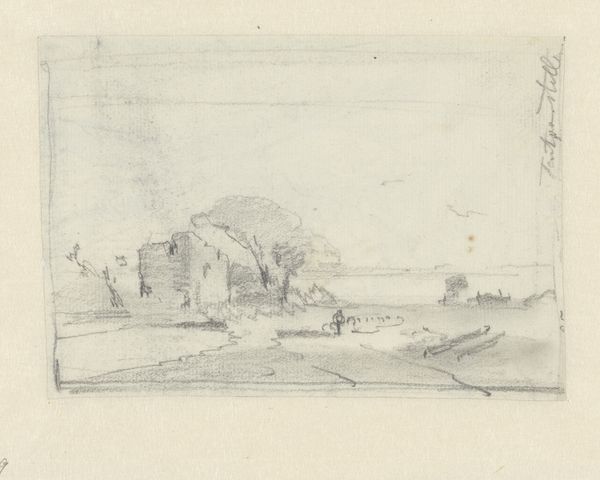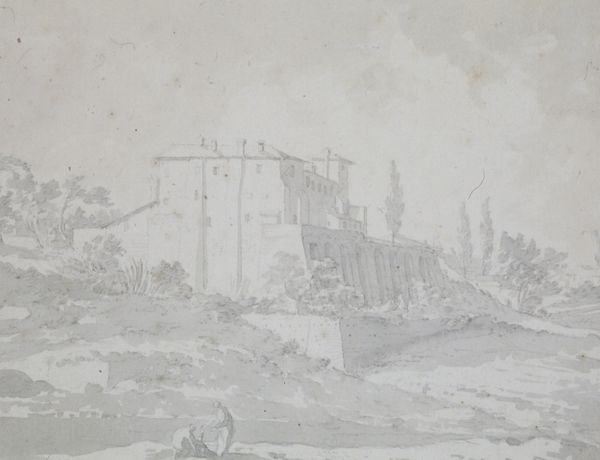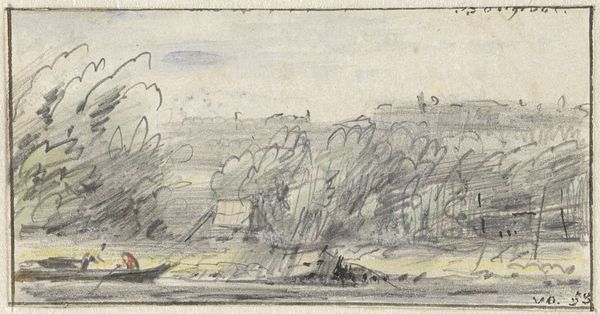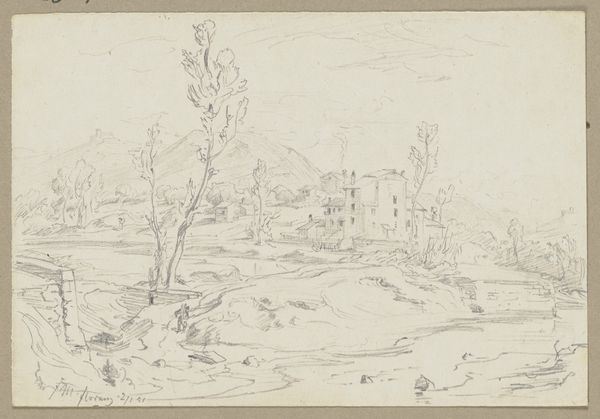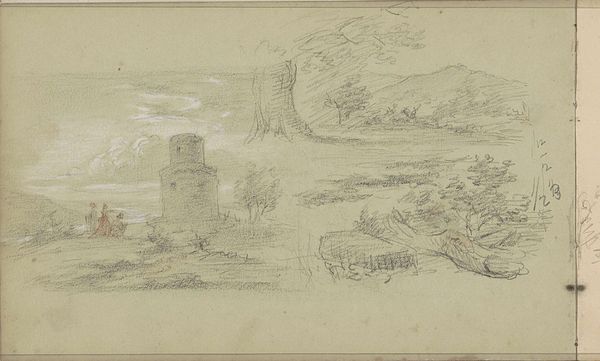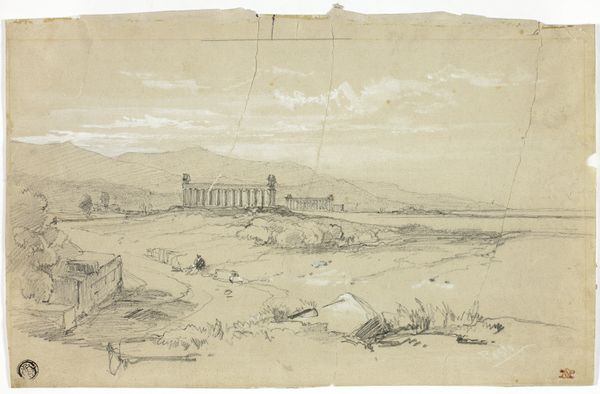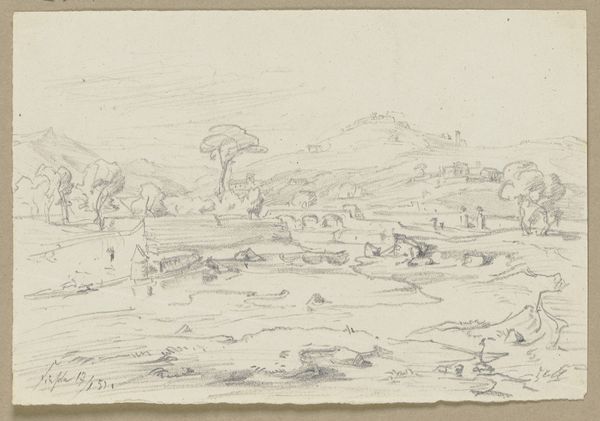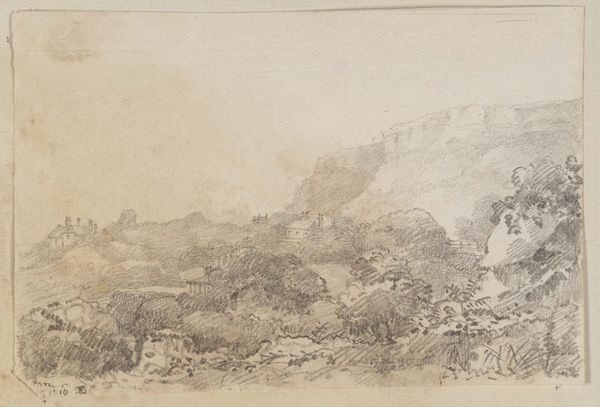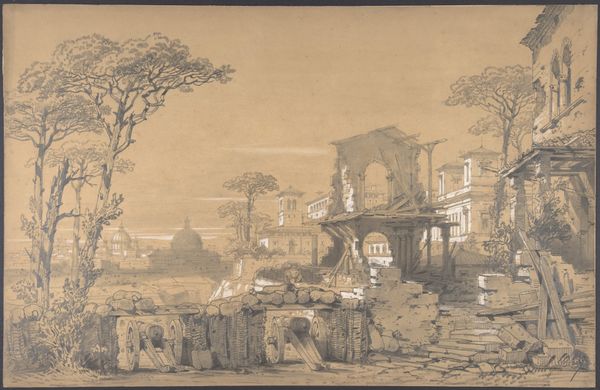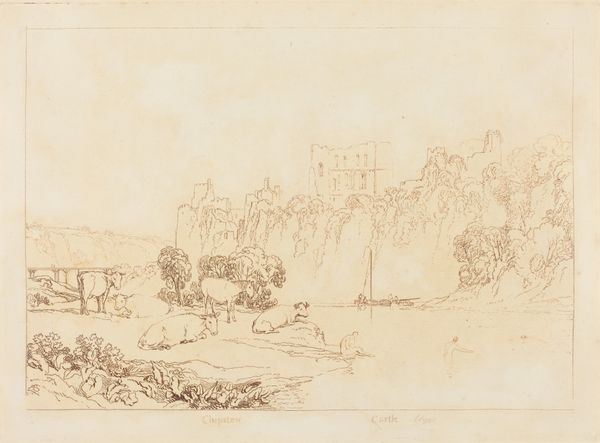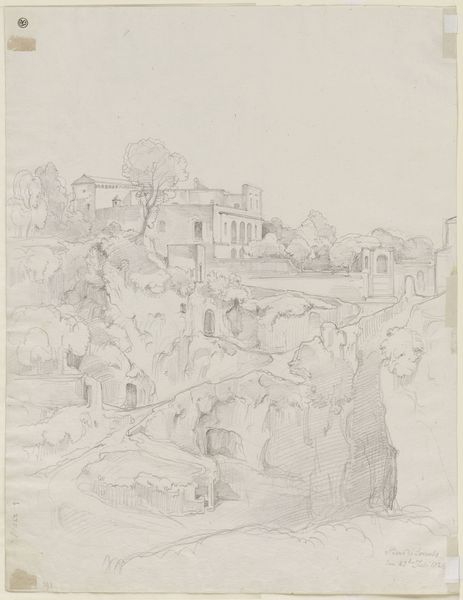
drawing, gouache, plein-air, paper, pencil, graphite
#
drawing
#
neoclacissism
#
gouache
#
plein-air
#
landscape
#
classical-realism
#
paper
#
pencil
#
graphite
#
history-painting
Dimensions: 200 × 286 mm
Copyright: Public Domain
Editor: This is "Pesto" by William Leighton Leitch, a drawing made with pencil, graphite, and gouache on paper. It's currently held at The Art Institute of Chicago. I'm really drawn to the subdued tones and the way the architectural elements are almost softened by the natural surroundings. What symbolic weight do you think is carried in the juxtaposition of the ruins and the organic environment? Curator: An excellent observation. The ruined temple, likely invoking a Greco-Roman past, immediately invites us to consider themes of impermanence and the cyclical nature of civilizations. Note how Leitch, working in the Neoclassical style, uses these ruins to access a collective cultural memory. What emotional impact does this evoke in you? Editor: I feel a sense of melancholy, almost, that even these grand structures are destined to crumble. It highlights the power of time and nature. Curator: Precisely. Consider the romantic notion of ruins that gained traction in the 18th and 19th centuries, symbolizing a reflection on mortality and the sublime. Leitch is not merely depicting a landscape; he’s embedding a cultural narrative about the passage of time and the dialogue between nature and human ambition. Editor: It's like the architecture serves as a constant reminder of history, with the landscape quietly reclaiming its space. Do you think Leitch chose this specific temple intentionally, or was it simply a visually appealing subject? Curator: The choice of temple is likely intentional. These classical structures represented ideals of order, reason, and beauty, values central to Neoclassical thought. By portraying them in a state of ruin, Leitch could be prompting a meditation on the fragility of those very ideals. Notice the detail of foliage obscuring portions of the columns: nature is encroaching, asserting its own order. Editor: That makes so much sense! I see the contrast between the human-made and the natural world much clearer now. It makes you think about what will endure. Curator: Indeed. This work leaves us contemplating the ongoing dialogue between human aspirations and the enduring power of the natural world, a dialogue encoded within these potent visual symbols.
Comments
No comments
Be the first to comment and join the conversation on the ultimate creative platform.
